Examining Continental Glaciers And How They Form
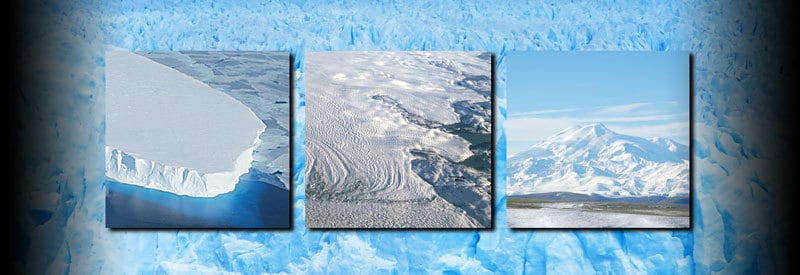
All the ice in the world's glaciers combined makes up around seventy percent of the world's total fresh water. Continental glaciers alone contain up to ninety-nine percent of this glacier ice.
A continental glacier is defined as a vast, expansive body of dense ice covering a large, relatively flat landmass. It is dome-shaped, with the thickest part of ice located in the center of the mass, from where it slowly spreads outwards in all directions under its own weight due to Earth's gravity.
The existence of these slow-moving mountains of ice plays a vital role in the continued existence of human life on a planet that keeps on getting warmer and drier. And in more than one way...
They are an invaluable source of fresh water that can be utilized for future use. Also, the volume of ice combined in all glaciers across the world is large enough to cause a sea-level rise of 70 meters (230 feet) if they should melt. It will be devastating to all coastal regions.
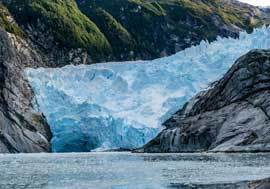
When you think of glaciers, impressive large masses of ice carving their way down mountainsides along valleys will spring to mind. However, unlike alpine glaciers, 99 percent of all glacier ice can be found in continental glaciers.
The reason why continental glaciers are not that well-known is simple. Most people are just unaware that they exist, as they are not as spectacular as their mountainous cousins and are also so large that they are seen as part of the underlying landmass.
This article explores what a continental glacier is and how it forms. It also looks at its significance and impact on a global scale.
Glacier Definition
As you may have concluded from the introduction, continental glaciers are just one of the two major types of glaciers. Both glaciers have many characteristics in common, though.
Before one can focus on continental glaciers, it is important to establish a concise definition of a glacier in general:
What Is A Glacier?
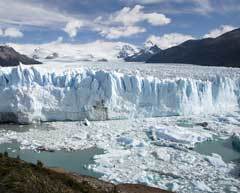
A glacier is a large dense mass of ice that slowly accumulates over an extended period of time and gradually moves and spread over land under its own weight due to the Earth's gravity. All forms of glaciers can be classified into two main categories, namely continental and alpine glaciers.
Continental and alpine glaciers can both be divided into smaller subcategories. Alpine glaciers consist of hanging, mountain, and valley glaciers. Continental glaciers can also be divided into ice sheets and ice fields.
Of the two main categories of glaciers, alpine glaciers are the most recognizable and well-known, and as far as the vast majority of casual observers are concerned, the only type of glacier in existence.
Continental glaciers, however, contain approximately 99 percent of all glacier ice, which makes them significantly more important from an environmental perspective.
The remainder of this post will focus specifically on continental glaciers, what they are, and how they occur.
Continental Glacier Definition
As already mentioned, continental glaciers are not nearly as well-known as their more visible and spectacular alpine counterparts. In fact, most observers are not even aware of their existence due to their size and the fact that they cover entire landmasses.
Only by examining them in more detail will one be able to form a clear picture of just how significant and essential continental glaciers are.
Before delving into the details of their formation and characteristics, one first needs to get a clear and concise definition of what continental glacier is:
What Is A Continental Glacier?
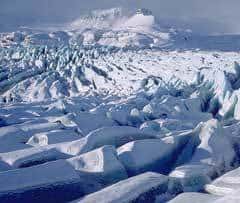
A continental glacier is a vast, expansive body of dense ice covering large and relatively flat landmasses. These glaciers are dome-shaped, with the thickest part located in the center of the mass, from where it slowly spreads outwards in all directions under its own weight due to Earth's gravity.
Although continental glaciers' sheer size dwarf alpine glaciers, they can also be divided into two main categories according to their dimensions:
- Ice Sheets
- Ice Fields (Ice Caps)
1) Ice Sheets
A glacier is categorized as an ice sheet when its size exceeds 50 000 square kilometers (19 000 square miles). Only two ice sheets exist in the world, namely the Antarctic and Greenland Ice Sheets.
The Antarctic Ice Sheet covers 98 percent of the continent's landmass. It is almost 14 million square kilometers (5.4 million square miles) in size. At its thickest point, the glacier ice is 4.7 kilometers (2.9 miles) deep with an average thickness of 2.16 kilometers (1.34 miles.)
The Greenland Ice Sheet covers around 80 percent of the total landmass. It has a size of 1.71 million square kilometers (660 000 square miles). The glacial ice has a maximum depth of over 3 kilometers (1.9 miles), with an average thickness of 2.13 kilometers (1.32 miles.)
The sheer size and thickness of the glacier ice on these two landmasses emphasize the importance and global impact of continental glaciers.
2) Ice Caps (Ice Fields)
A glacier is categorized as an ice field or ice cap when its size is less than 50 000 square kilometers (19 000 square miles). These glaciers are dome-shaped and usually form on top of mountains or volcanoes.
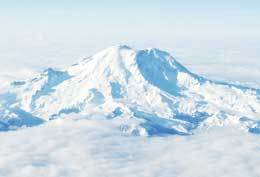
Although these glaciers are significantly smaller than the two major ice sheets, they occur in numerous locations throughout the world, and some of them are big enough to cover entire mountain ranges.
Apart from Australia, which is the only continent without any glaciers, ice caps can be found on every continent on the planet. Examples include:
Africa: The Furtwangler Glacier on Mount Kilimanjaro with a size of 11 000 square meters (120,000 square feet).
Antarctica: Although it is classified as an ice sheet due to its size, it has most of the characteristics of an ice cap and is often referred to as the Antarctic Ice Cap.
North America: The Barnes Ice Cap in Canada with a size of approximately 6 000 square kilometers (2 300 square miles).
South America: The Quelcaya Ice Cap in Peru with a size of 42.8 square kilometers (16.5 square miles).
Europe: The Vatnajökull Glacier in Iceland with a size of roughly 8 200 square kilometers (3 166 square miles).
Asia: The Grigoriev Ice Cap in Kyrgyzstan with a relatively small size of 8 square kilometers (3.08 square miles).
These glaciers are just a few examples of thousands of ice caps spread out throughout the world. In total, there are approximately 198 000 glaciers in the world, of which ice caps make up a substantial percentage.
How A Continental Glacier Form
A continental glacier, like an alpine glacier, takes approximately 100 to 150 years to form. It is just a rough estimate of the time it takes for the basic structure of the ice mass (that forms a glacier) to be established.
Glaciers can only form in regions where it is cold enough for snow to retain its solid form all year round. It allows for the formation of a glacier over a number of years.
As fresh snow falls, snow from the previous season is buried. The weight of the fresh snow forces the layer below to recrystallize, forming larger grains while forcing out some of the air between them during this process.
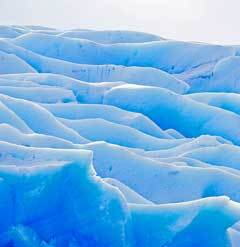
Over time the compacted snow turns into firn, which is a transitory state that occurs before compressed snow finally turns into glacier ice. As new layers of snow continue to fall, the ice crystals keep on getting denser, with the majority of air forced out between them.
When enough layers accumulated above it, the pressure becomes so high that the large, dense ice crystals compress into glacier ice, with the little air left becoming trapped inside the ice mass.
A soon as the body of ice becomes too dense and heavy to maintain its shape, it slowly starts to move and spread outwards in all directions.
Large continental glaciers, called ice sheets, can grow to essentially cover entire landmasses, as is the case with Greenland and Antarctica.
Conclusion
They may not capture the limelight as often as their glamorous Alpine cousins, but as this article illustrated, continental glaciers are more important to the global environment and human survival than all other glaciers combined.
Since climate change is threatening the life of all glaciers, causing them to retreat worldwide, the melting of the Antarctic and Greenland ice sheets is a massive cause of concern.
The reason for this concern was clearly highlighted by this post's emphasis on the size, volume, and impact of these massive bodies of ice.
This article illustrated what a continental glacier is and how it is formed. It also briefly touched on its importance and impact on the environment on a global scale.
Never miss out again when another interesting and helpful article is released and stay updated, while also receiving helpful tips & information by simply following this link .
Until next time, keep your eye on the weather!
